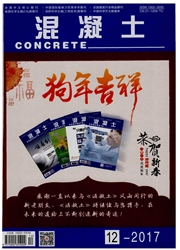

 中文摘要:
中文摘要:
青海是中国第三大盐渍土地区,自然环境条件恶劣,混凝土结构腐蚀严重,且目前对于硫酸盐渍土地区混凝土耐久性的研究尚不完善。在现场调查的基础上,针对青海察格高速上使用的普通混凝土进行硫酸盐快速腐蚀试验,并通过XRD、SEM等技术手段研究了在不同的土壤环境下的腐蚀机理,结合半埋状态下混凝土各部位和周围盐渍土之间的离子交换传输机理,对半埋混凝土状态下混凝土的使用寿命进行了预测。结果表明:硫酸盐离子在半埋混凝土靠近表层处浅层区域的传输机理主要是毛细管吸入,深层区域为扩散;通过微观试验发现,硫酸盐在混凝土浅层区域的腐蚀破坏为物理结晶破坏,深层区域为化学腐蚀,且半埋混凝土吸附区破坏的主要原因为化学腐蚀;基于快速腐蚀试验对盐渍土地区半埋混凝土进行的寿命预测和青海盐渍土地区未经任何处理的半埋混凝土的寿命基本一致。
 英文摘要:
英文摘要:
Qinghai province is China's the third largest sulfate saline soil area,where the natural condition is harsh and study on the durability of partially-exposed concrete in sulfate saline soil area is imperfection.Based on the field investigation, it makes a sulfate accelerated attack test on ordinary concrete used in Chage Freeway,Qinghai province,and studies the attack mechanism of the partially-exposed concrete in sulfate saline soil area with XRD and SEM.It also predicts service life of partially-exposed concrete combining with the transport mechanism model between parts of the partially-exposed concrete and sulfate soil around.The results show that the transport mechanism of sulfate ions in shallow area near the surface is capillary suction,and in the deep area is diffusion in partially-exposed concrete.The XRD and SEM show that the sulfate attack is caused by physical crystallization damage in shallow area and chemical attack in deep area; predicted life of the partially-exposed concrete in salty area based on the sulfate accelerated attack test is almost same with the concrete in Qinghai province.
 同期刊论文项目
同期刊论文项目
 同项目期刊论文
同项目期刊论文
 期刊信息
期刊信息
